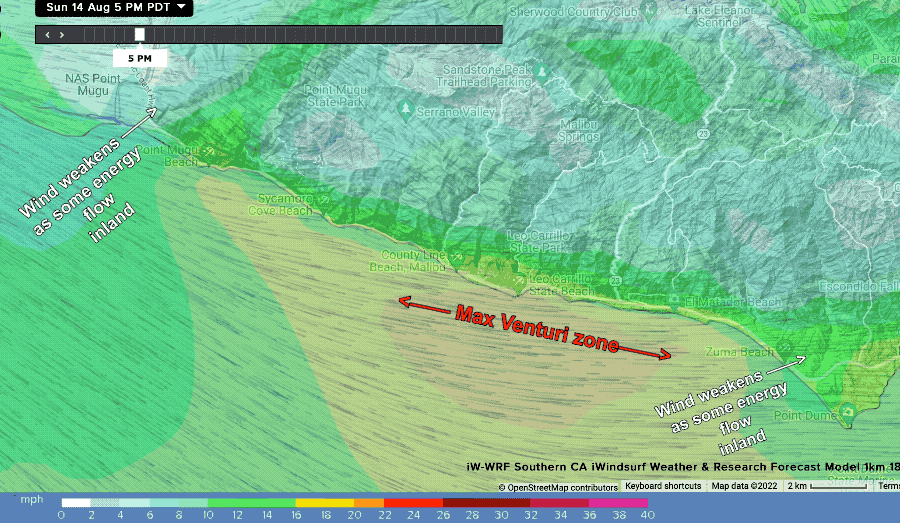
Hey Mike,
Quick question. Why is it that Leo and Cabrillo are always the windiest locations? I get the pressure gradient and that Cabrillo is out on the peninsula and Leo is outside the LA bay. But Leo is generally windier than relatively similar sites like Zuma. Also Cabrillo is generally windier than the rest of PV peninsula and even windier than the middle of the channel.
Additionally, if I continue the wind vector forward from Cabrillo to Seal Beach and Sunset Beach, I’d expect those sites to also be windy (heat bubble notwithstanding) — but they’re always lighter than Cabrillo and even lighter than Belmont. I put all the above together and just get more confused. Sorry if this is a basic question and one that I should already know the answer to. Shaun
Hi Shaun, Below is quick and simplified explanation in animated form. Both Cabrillo and Leo benefit from a one sided venturi effect in the most common non-eddy ocean wind directions. Basically, as the wind hits the mountains upwind of Leo and Cabrillo molecules in the air are forced to converge and compress since the cool air can not can to pass over the steep terrain or the inversion just aloft.
This convergence creates a very local high-pressure zone. Then as the wind passes those sites the flatter topography allows the wind to move inland creating divergence as the wind fans out. Since the air molecules can spread apart and are no longer as compressed it creates relatively low pressure.
Together these 2 processes create an extremely local pressure gradient from the higher pressure to the lower pressure which locally accelerates the winds above the strength of the prevailing wind.
ie. Sites just upwind of Cabrillo or Leo get the prevailing wind strength. While those downwind are in the divergence zone so they have lighter wind.
If you kited far enough outside at Cabrillo or Leo you would find that the winds are weaker than near shore which is the opposite of what you would expect.
Does that make sense?


